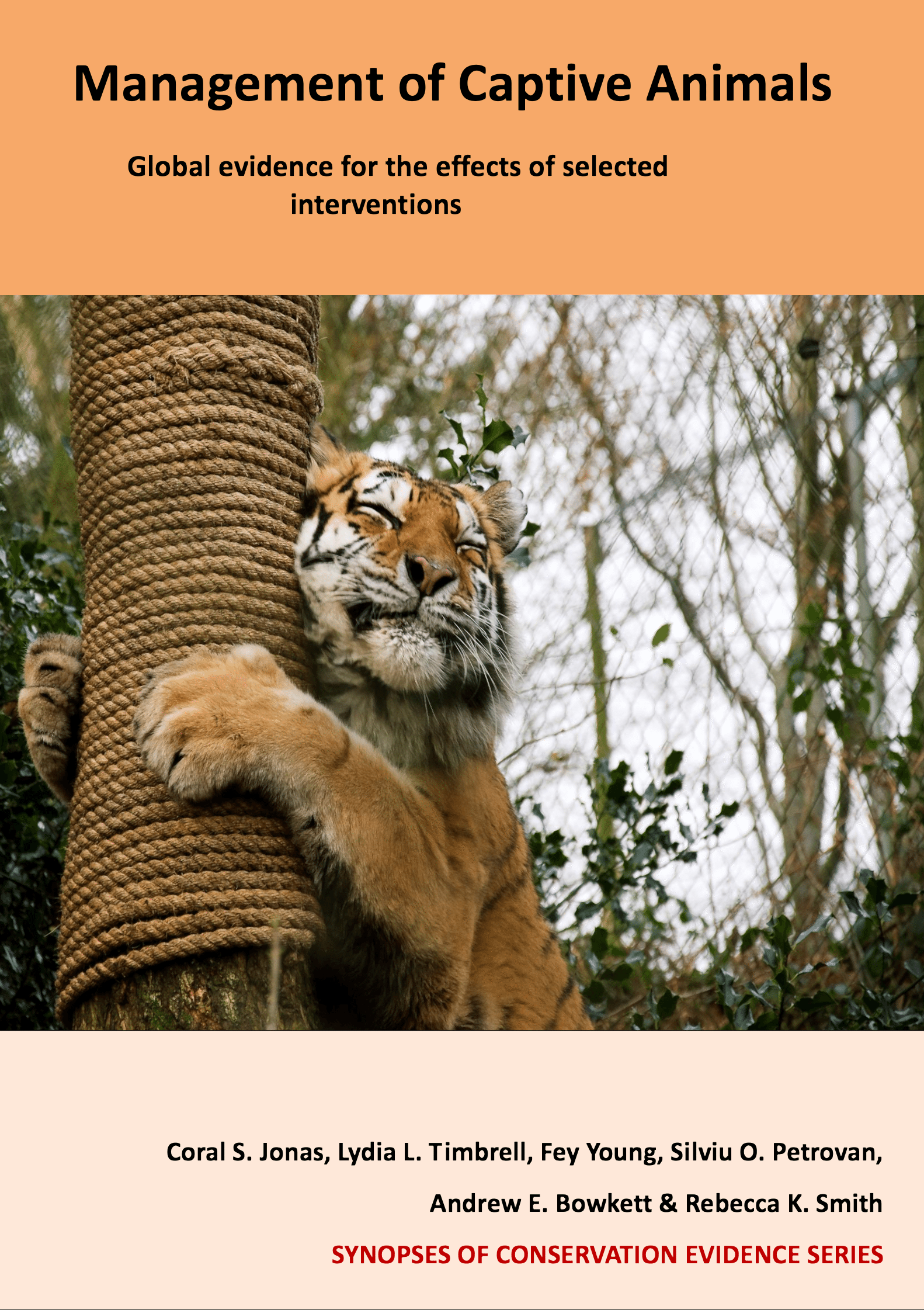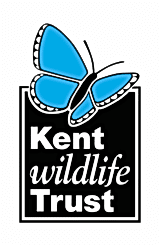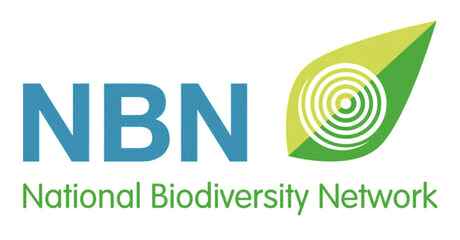Actions to conserve biodiversity
We have summarised evidence from the scientific literature about the effects of actions to conserve wildlife and ecosystems.
Review the evidence from the studies
Not sure what Actions are? Read a brief description.
96 Actions found
Refine
Hide
96 Actions found
Download Actions
Order results by:
| Action | Effectiveness | Studies | Category | |
|---|---|---|---|---|
Amphibians: Provide particular enclosure furniture for calling sites, breeding areas or egg laying sites Action Link | Unknown effectiveness (limited evidence) | 2 | ||
Amphibians: Play recordings of breeding calls to simulate breeding season in the wild Action Link | Unknown effectiveness (limited evidence) | 2 | ||
Amphibians: Allow female mate choice Action Link | Unknown effectiveness (limited evidence) | 2 | ||
Amphibians: Formulate larval diets to improve development or survival to adulthood Action Link | Unknown effectiveness (limited evidence) | 2 | ||
Carnivores: Feed a plant-derived protein diet Action Link | Unknown effectiveness (limited evidence) | 2 | ||
Carnivores: Scatter food around enclosure Action Link | Unknown effectiveness (limited evidence) | 2 | ||
Carnivores: Provide live vertebrate prey Action Link | Unknown effectiveness (limited evidence) | 2 | ||
Primates: Present food in water (including dishes and ponds) Action Link | Unknown effectiveness (limited evidence) | 1 | ||
Primates: Present food dipped in food colouring Action Link | Unknown effectiveness (limited evidence) | 1 | ||
Primates: Present food items whole instead of processed Action Link | Likely to be beneficial | 1 | ||
Primates: Present feeds at different crowd levels Action Link | Likely to be beneficial | 1 | ||
Primates: Provide live vegetation in planters for foraging Action Link | Unknown effectiveness (limited evidence) | 1 | ||
Primates: Provide cut branches (browse) Action Link | Likely to be beneficial | 1 | ||
Primates: Provide live invertebrates Action Link | Likely to be beneficial | 1 | ||
Primates: Provide fresh produce Action Link | Likely to be beneficial | 1 | ||
Primates: Change feeding times Action Link | Likely to be beneficial | 1 | ||
Amphibians: Provide artificial aquifers for species which breed in upwelling springs Action Link | Unknown effectiveness (limited evidence) | 1 | ||
Amphibians: Vary quality or quantity (UV% or gradients) of enclosure lighting to simulate seasonal changes in the wild Action Link | Unknown effectiveness (limited evidence) | 1 | ||
Amphibians: Provide particular plants as breeding areas or egg laying sites Action Link | Unknown effectiveness (limited evidence) | 1 | ||
Amphibians: Manipulate sex ratio within the enclosure Action Link | Unknown effectiveness (limited evidence) | 1 | ||
Amphibians: Separate sexes in non-breeding periods Action Link | Unknown effectiveness (limited evidence) | 1 | ||
Amphibians: Supplement diets with carotenoids (including for colouration) Action Link | Unknown effectiveness (limited evidence) | 1 | ||
Amphibians: Increase caloric intake of females in preparation for breeding Action Link | Unknown effectiveness (limited evidence) | 1 | ||
Amphibians: Manipulate larval density within the enclosure Action Link | Unknown effectiveness (limited evidence) | 1 | ||
Carnivores: Allocate fast days Action Link | Unknown effectiveness (limited evidence) | 1 |
Download Actions

Management of Captive Animals - Published 2018
Captive Animal Synopsis
Watch this search
If you are familiar with RSS feeds, please click the button below to retrieve the feed URL:
RSS feed for this searchIf you are unfamiliar with RSS feeds, we would suggest reading this BBC article.
Unfortunately, due to the number of feeds we have available, we cannot provide e-mail updates. However, you could use tools such as Feed My Inbox to do this for you.
What are 'Individual studies' and 'Actions'?
Individual studies
An individual study is a summary of a specific scientific study, usually taken from a scientific journal, but also from other resources such as reports. It tells you the background context, the action(s) taken and their consequences.
If you want more detail please look at the original reference.
Actions
Each action page focuses on a particular action you could take to benefit wildlife or ecosystems.
It contains brief (150-200 word) descriptions of relevant studies (context, action(s) taken and their consequences) and one or more key messages.
Key messages show the extent and main conclusions of the available evidence. Using links within key messages, you can look at the paragraphs describing each study to get more detail. Each paragraph allows you to assess the quality of the evidence and how relevant it is to your situation.
Where we found no evidence, we have been unable to assess whether or not an intervention is effective or has any harmful impacts.




















